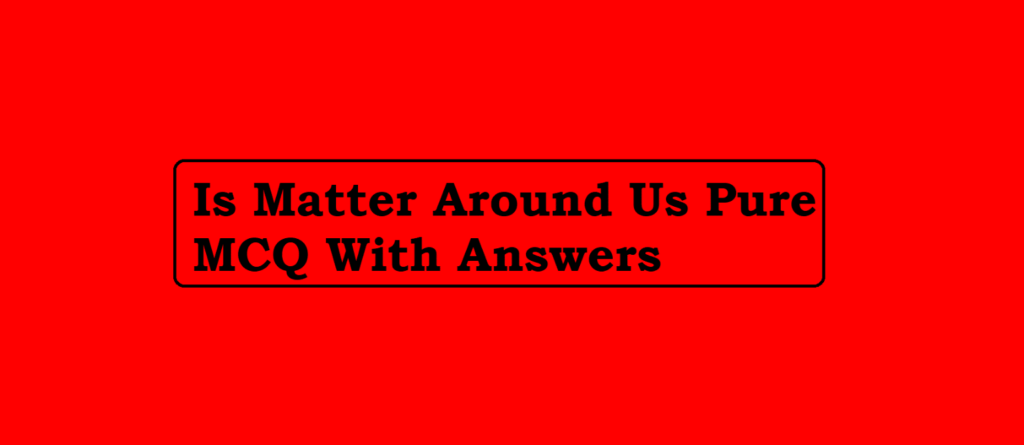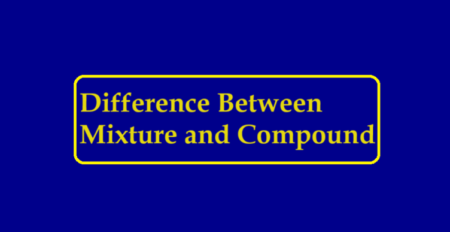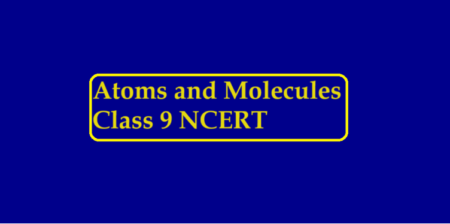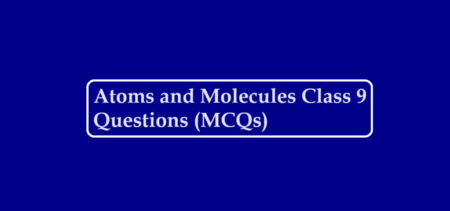Is Matter Around Us Pure MCQ With Answers
Multiple Choice Questions:
Que 1. What is the name of the metal which exists in the liquid state at room temperature?
(a) Sodium
(b) Potassium
(c) Mercury
(d) Bromine
Que 2. When the liquid is spun rapidly, the denser particles are forced to the bottom and the lighter particles stay at the top. This principle is used in:
(a) Centrifugation
(b) Fractional distillation
(c) Evaporation
(d) Tunneling
Que 3. Sol and gel are examples of —————— (a) Solid-solid colloids
(b) Sol is a solid-liquid colloid and gel is a liquid-solid colloid
(c) Sol is solid- a solid colloid and gel is a solid-liquid colloid
(d) Sol is a liquid-solid colloid and gel is a solid-liquid colloid
Que 4. Which of the following elements is not a metalloid?
(a) Boron
(b) Silicon
(c) Germanium
(d) Tungsten
Que 5. If we put camphor in an open container, its amount keeps on decreasing due to the phenomenon of:
(a) Evaporation
(b) Precipitation
(c) Condensation
(d) Sublimation
Is Matter Around Us Pure MCQ With Answers
Que 6. A heterogeneous mixture in which the solute particles do not dissolve and remain suspended throughout the solvent and the solute particles can be seen with the naked eye is known as:
(a) Colloidal solution
(b) Supersaturated solution
(c) Sublimation
(d) Suspensions
Que 7. In a tincture of iodine, find the solute and solvent.
(a) Alcohol is the solute and iodine is the solvent
(b) Iodine is the solute and alcohol is the solvent
(c) Any component can be considered as solute or solvent
(d) Tincture of iodine is not a solution
Que 8. The continuous zig-zag movement of colloidal particles in a dispersion medium is called:
(a) Dispersion
(b) Tyndall effect
(c) Brownian movement
(d) Oscillation
Que 9. A pure substance that is made up of only one kind of atom and cannot be broken into two or more simpler substances by physical or chemical means is referred to as:
(a) A compound
(b) An element
(c) A molecule
(d) A mixture
Que 10. Which of the following non-metal is a good conductor of electricity?
(a) Aluminium
(b) Silicon
(c) Graphite
(d) Gold
Que 11. Which of the following property does not describe a compound?
(a) It is composed of two or more elements
(b) It is a pure substance.
(c) It cannot be separated into constituents by physical means
(d) It is mixed in any proportion by mass
Que 12. When two liquids do not mix, they form two separate layers and are known as:
(a) Miscible liquids
(b) Immiscible liquids
(c) Saturated liquids
(d) Supersaturated liquids
Que 13. How can one separate ammonium chloride from a mixture containing ammonium chloride and sodium chloride?
(a) Precipitation
(b) Sublimation
(c) Chromatography
(d) Centrifugation
Que 14. The amount of solute present per unit volume or per unit mass of the solution/solvent is known as
(a) Composition of solute
(b) Concentration of a solvent
(c) Concentration of a solute
(d) Concentration of a solution
Que 15. According to the definition of pure substance, which of the following is a pure substance?
(a) Ice
(b) Mercury
(c) Iron
(d) All of these
Is Matter Around Us Pure MCQ With Answers
Que 16. CO2 can be easily liquified and even solidified because
(a) It has weak forces of attraction
(b) It has comparatively more force of attraction than other gases
(c) It has more intermolecular space
(d) It is present in the atmosphere.
Que 17. Which of the following has the highest kinetic energy?
(a) Particles of ice at 0 °C
(b) Particles of water at 0 °C
(c) Particles of water at 100 °C
(d) Particles of steam at 100 °C
Que 18. The kinetic energy of molecules is directly proportional to
(a) Temperature
(b) Pressure
(c) Both (a) and (b)
(d) Atmospheric pressure
Que 19. Which of the following does not affect the rate of evaporation?
(a) Wind speed
(b) Surface area
(c) Temperature
(d) Insoluble heavy impurities
Que 20. Under which of the following conditions we can boil water at room temperature?
(a) At low pressure
(b) At high pressure
(c) At very high pressure
(d) At atmospheric pressure
Is Matter Around Us Pure MCQ With Answers
Multiple Choice Answers:
Ans 1. (c) Mercury
Ans 2. (a) Centrifugation
Ans 3. (b) Sol is a solid-liquid colloid and gel is a liquid-solid colloid
Ans 4. (d) Tungsten
Ans 5. (d) Sublimation
Ans 6. (d) Suspensions
Ans 7. (b) Iodine is the solute and alcohol is the solvent
Ans 8. (c) Brownian movement
Ans 9. (b) An element
Ans 10. (c) Graphite
Ans 11. (d) It is mixed in any proportion by mass
Ans 12. (b) Immiscible liquids
Ans 13. (b) Sublimation
Ans 14. (d) Concentration of a solution
Ans 15. (d) All of these
Ans 16. (b) It has comparatively more force of attraction than other gases
Ans 17. (d) Particles of steam at 100 °C
Ans 18. (a) Temperature
Ans 19. (d) Insoluble heavy impurities
Ans 20. (a) At low pressure
[pdfjs-viewer url=”https://sciencemotive.com/wp-content/uploads/2023/06/Is-Matter-Around-Us-Pure.pdf” attachment_id=”4869″ viewer_width=100% viewer_height=800px fullscreen=true download=true print=true]



